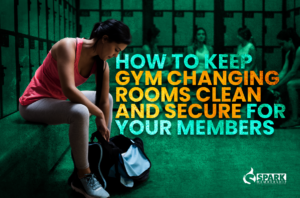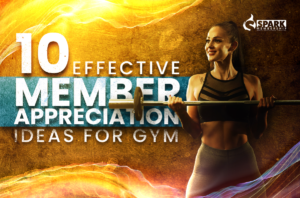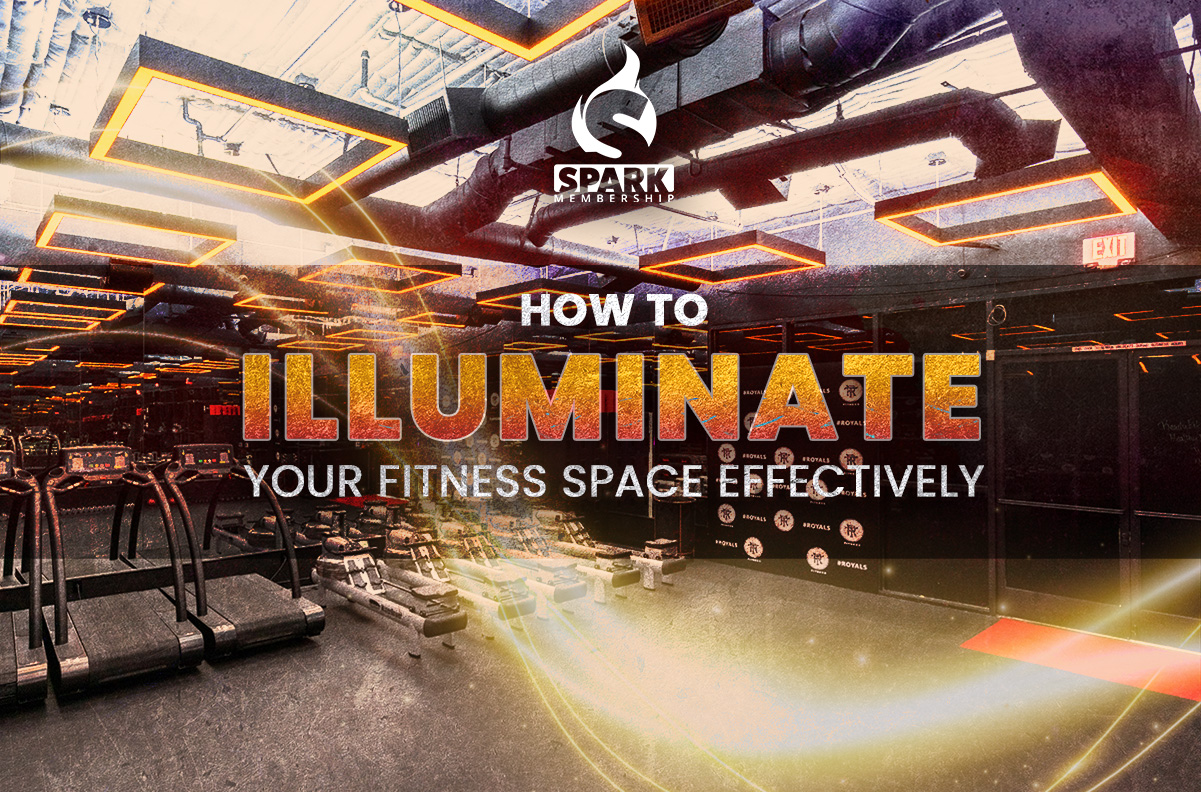
Lighting is not just a functional necessity in a gym; it’s a strategic component that can significantly influence the mood, energy, and safety of the space. An effectively illuminated gym not only ensures that members can see clearly and exercise safely, but it also sets the tone of the workout environment, affecting motivation and stamina. This guide explores essential lighting concepts and provides practical solutions for gym owners and managers seeking to enhance their fitness facilities.
Why Lighting Matters in Gyms
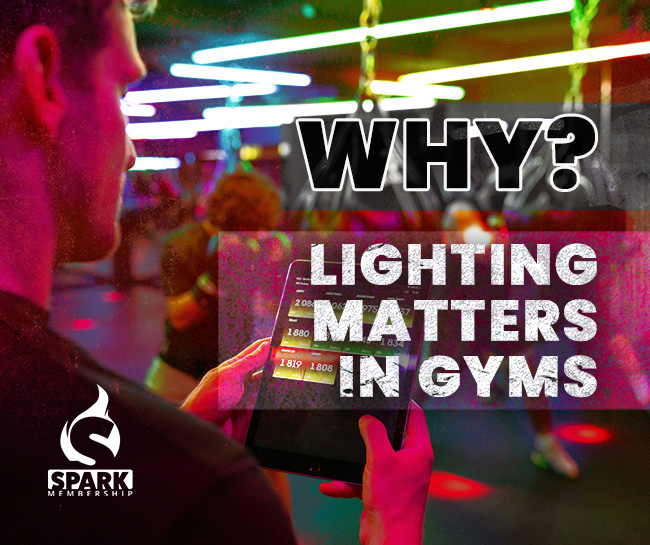
Proper lighting in a gym does more than just brighten a room. It plays a crucial role in ensuring safety, conserving energy, and creating an atmosphere conducive to physical activity. Good gym lighting can reduce the risk of accidents and injuries by improving visibility, especially in areas with heavy machinery and free weights. Furthermore, lighting can influence the energy levels of gym-goers; bright, vibrant lighting can boost alertness and energy, while dimmer, softer lights might be used in areas designated for stretching and relaxation to promote a calm environment.
💡 In addition to enhancing visibility and safety, studies have shown that well-designed lighting in gyms can also positively impact mood and motivation levels, potentially leading to increased workout performance and adherence.
Basic Lighting Guidelines and Color Temperatures
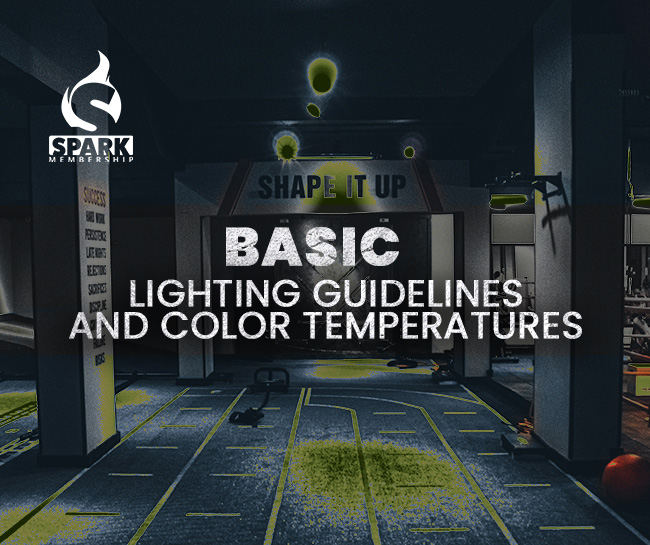
When optimizing the lighting for your gym, combining general guidelines with strategic color temperatures can significantly enhance both the functionality and atmosphere of your fitness space. Here’s a detailed guide tailored to various areas within the gym, helping you make informed decisions that improve visibility, safety, and the overall workout experience:
- General Gym Areas:
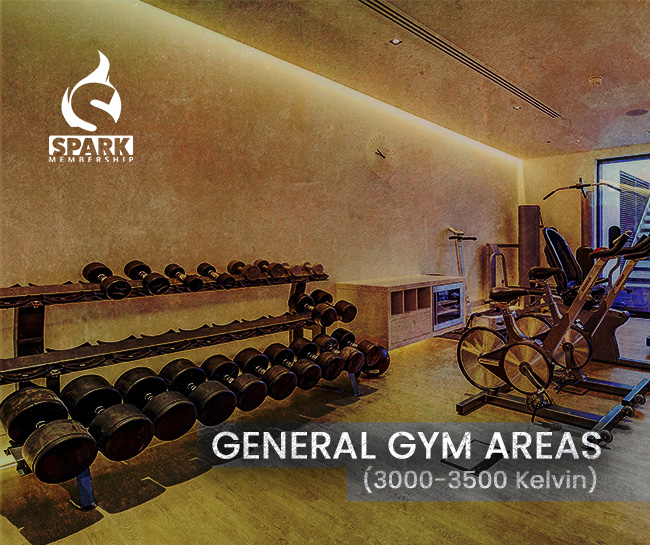
Aim for a brightness of 300 to 500 lux. This level ensures good visibility for a variety of activities, from using gym machines to free weights. Opt for a neutral to cool color temperature (3500 to 5000 Kelvin) to maintain high energy and alertness levels crucial for most exercises.
- Entrance/Reception:
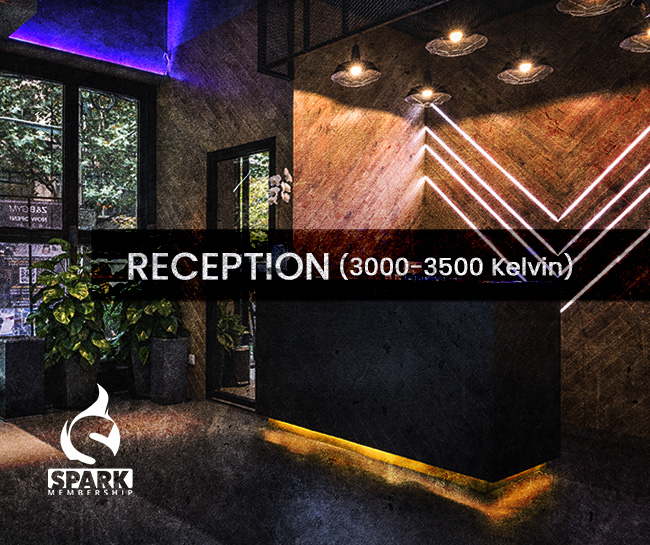
The entrance should be welcoming and clearly visible with around 300 lux, which helps in creating a positive first impression and ensures safety as members navigate through the space. A warmer color temperature, around 3000 to 3500 Kelvin, can make the area appear more inviting.
- Weight Rooms:

Lighting in weight rooms should be at least 300 lux, with consideration for higher levels up to 500 lux in areas where more precise tasks are performed, such as free weight zones. A cooler color temperature (around 4000 Kelvin) is recommended to enhance focus and reduce the risk of accidents by improving visibility.
- Yoga/Pilates Studios:
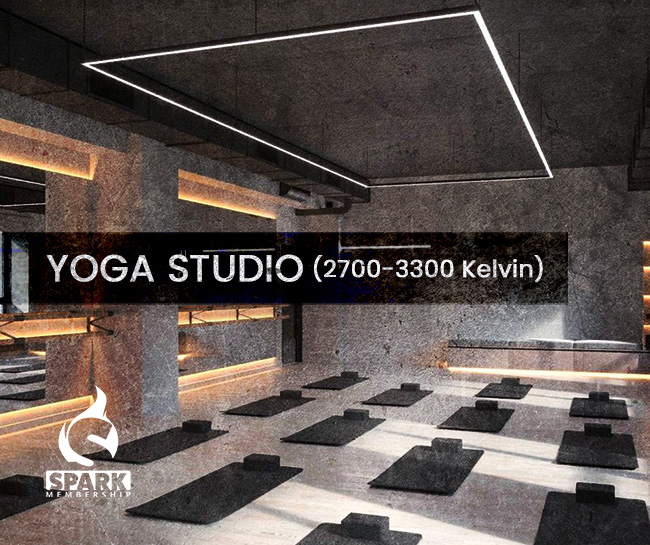
For spaces dedicated to yoga and pilates, a warmer color temperature (2700 to 3300 Kelvin) helps create a relaxing and calming atmosphere, which is conducive to mindfulness and stretching exercises. The light intensity should be softer, around 200 to 300 lux, to complement the serene environment required for these activities.
- Cardio Rooms:
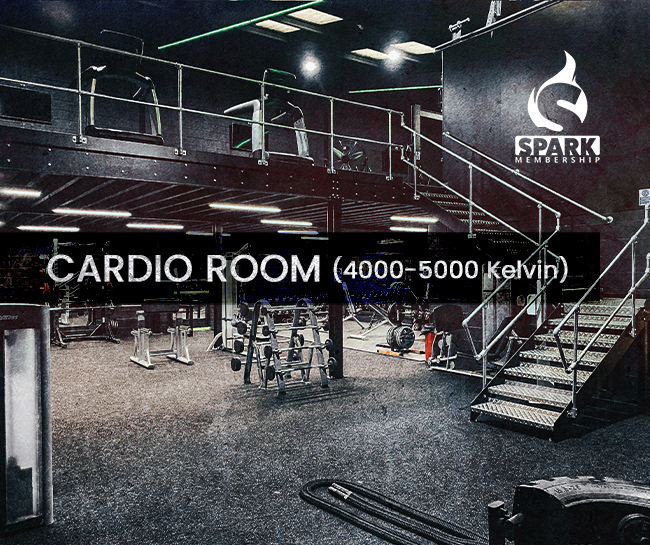
To energize and motivate users, cardio rooms benefit from cooler color temperatures (4000 to 5000 Kelvin) which mimic daylight, enhancing concentration and stamina. Brightness levels should be around 400 to 500 lux, sufficient to safely operate treadmills, ellipticals, and other cardio equipment.
💡 In cutting-edge cardio rooms, dynamic lighting systems simulate outdoor conditions, transitioning from sunrise to daytime brightness, boosting energy levels and mood during workouts.
Incorporating these specific lighting standards and color temperatures into your gym’s design not only ensures compliance with safety and energy efficiency but also enhances the overall member experience. By understanding the unique requirements of each area within your gym, you can create a dynamic environment that motivates and supports the well-being of your clients.
Choosing the Right Type of Lighting for Gyms
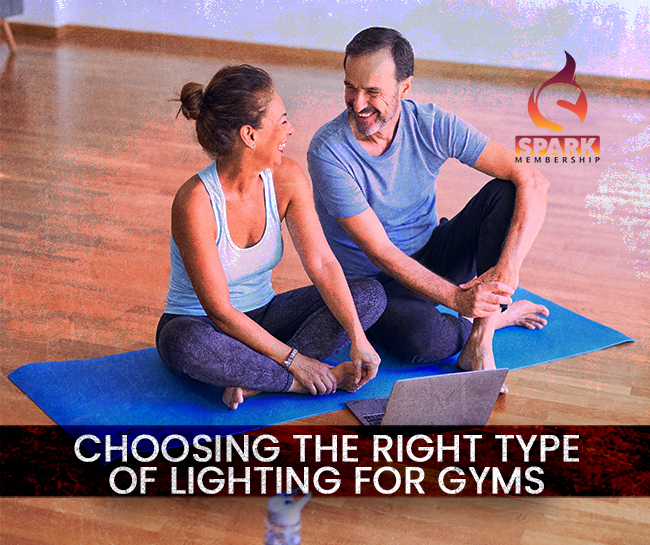
The type of lighting chosen can have a profound impact on a gym’s atmosphere and functionality. LED lighting is often favored for its long lifespan and energy efficiency, making it ideal for both general and task lighting in gyms. Fluorescent lights, although less energy-efficient than LEDs, are commonly used due to their lower upfront cost. Each type of lighting comes with its own set of pros and cons, such as the warmth of the light, the intensity, and the area it needs to cover.
Proper gym lighting is more than just a utility—it’s a vital component of the gym’s design that affects safety, energy efficiency, and atmosphere. By carefully selecting the type of lighting, considering the color temperature, and exploring innovative lighting designs, gym owners can create a motivating and safe environment for their members. Evaluate your current lighting setup and consider upgrading to meet these standards, ensuring your gym remains a vibrant and energizing place for everyone.
By adhering to these guidelines and continuing to innovate in gym lighting, gym owners and managers can significantly enhance their fitness facilities, promoting not just better visibility but also a more engaging and motivational workout environment.
Ready to ignite your gym’s success? Don’t let admin tasks weigh you down. Experience the power of Spark Membership Software and unlock a world of seamless management. Elevate your gym game—sign up now and let’s spark greatness together!


